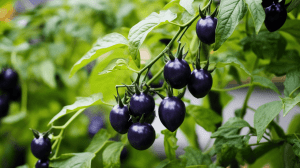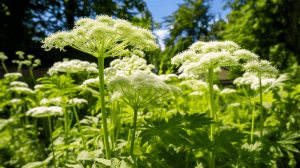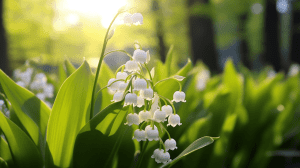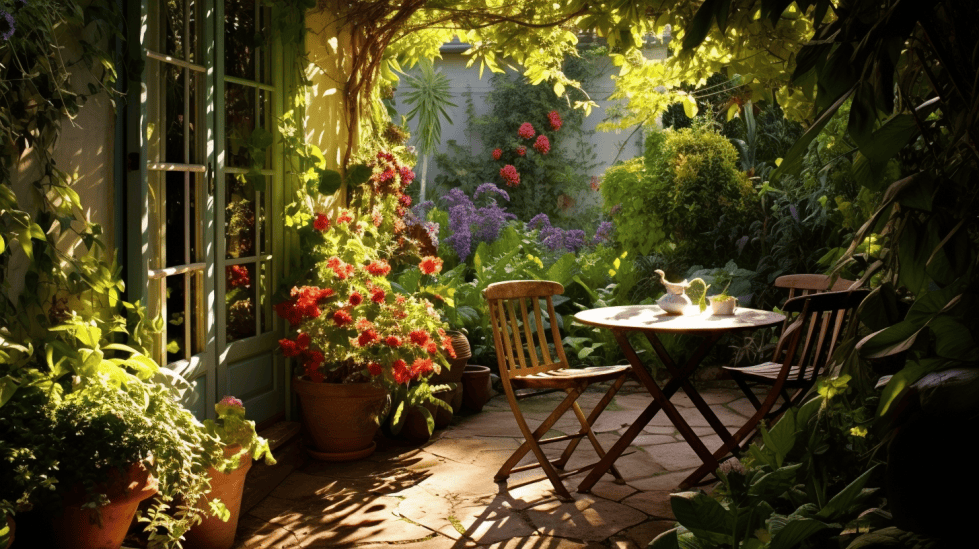How to Grow a Poison Garden
Growing a poison garden may seem like an unusual hobby, but it can be an intriguing and educational way to explore the world of poisonous plants. It’s essential to approach this endeavor with caution and a thorough understanding of the toxic species you’ll be growing. By doing so, you’ll not only learn about these fascinating plants but also create an unconventional garden filled with history, mythology, and a touch of danger.
Before diving into this unique gardening project, it’s important to research the poisonous plants you’re interested in cultivating. Familiarize yourself with their growing requirements, potential hazards, and compatibility with other plants in your garden. It’s also crucial to consider the safety of children, pets, and visitors who may encounter your poison garden.
Key Takeaways
- Approach growing a poison garden with caution and thorough research on toxic species
- Familiarize yourself with the history, mythology, and potential hazards of poisonous plants
- Prioritize safety by considering the impact on children, pets, and visitors
Understanding Poisonous Plants
When planning a poison garden, it’s essential for me to understand the various types of poisonous plants, their toxicity levels, and how they may interact with other plants in a garden setting. Some of the most toxic plants include poison hemlock, oleander, and castor bean, while many common garden and ornamental plants such as daffodils and potato plants also contain poisonous properties 1.
To ensure that I carefully design my poison garden, I must be aware of the most toxic plants and choose the ones that will thrive in my specific growing environment. For example, certain narcotic plants may require specific care, such as partially shaded areas or well-drained soil, to ensure they grow properly and safely in the garden.
I also need to keep in mind how these poisonous plants may affect other garden plants. For instance, many plants in the nightshade family, such as eggplants, peppers, potatoes, and tomatoes, contain toxic properties and should be planted with caution among non-toxic species 2.
It’s essential for me to do thorough research on each plant species I intend to include in my poison garden, ensuring their compatibility with other plants. This research should cover plant care, such as the appropriate amount of sunlight and watering needs. By doing so, I can create a visually captivating garden that showcases both the beauty and the deadly aspects of nature.
In addition to selection and cultivation, it’s crucial to consider safety precautions when creating a poison garden. I must always be conscious of my proximity to children, pets, and curious visitors who might come into contact with the poisonous plants. Implementing warning signs or providing guided tours can be an effective way of keeping people informed and safe while still allowing for a unique and educational garden experience.
Footnotes
Relating History and Mythology
In ancient times, people believed that plants had magical and healing properties. They often relied on these plants to create medicines and antidotes. A significant part of growing a poison garden is understanding its historical context and the influence of mythology on its development.
Greek mythology offers numerous examples of poisonous plants. One famous example is the story of Medea, who used a potion made from plants to help Jason obtain the Golden Fleece. The plants used for the potion were both poisonous and medicinal, showcasing the dual nature of these species.
In the 16th century, the Apothecary Garden was founded in Venice, initially serving as a place where students could learn to identify and cultivate medicinal plants. The garden soon evolved to include poisonous plants, which were often used for both healing and harmful purposes.
I find that exploring the history and mythology connected to poisonous plants enhances the experience of creating a poison garden. It allows me to appreciate the connections between ancient cultures and the evolving understanding of the natural world. Moreover, it serves as a reminder of the fine line between medicine and poison, emphasizing the importance of responsible cultivation and use of these potentially dangerous plants.
Recognizing Deadly Species
When growing a poison garden, it’s crucial to know about the most dangerous plants and how to recognize them properly. In this section, I’ll cover how to spot three such hazardous species: Deadly Nightshade, Giant Hogweed, and Lily of the Valley.
Spot the Deadly Nightshade

Deadly Nightshade, also known as Atropa Belladonna, is a highly poisonous plant. Its dark green leaves are ovate and pointed at the tips. The plant produces flowers that are bell-shaped and purple, with a faint, sweet scent. The fruit is a shiny black berry that could be mistaken for cherries. Be cautious when handling Deadly Nightshade, as all parts of the plant are toxic and contain the alkaloids atropine, hyoscyamine, and scopolamine.
Identify the Giant Hogweed

Giant Hogweed is another plant to look out for due to its phototoxic effects. This plant can grow up to 14 feet tall, and its leaves can span up to five feet. The primary identifying feature of Giant Hogweed is its large umbrella-shaped clusters of small, white flowers that usually bloom from May to July. The sap of this plant can cause severe skin reactions when exposed to sunlight. If you come into contact with Giant Hogweed, it’s essential to wash your skin thoroughly and avoid sunlight exposure.
Dangerous Beauty of Lily of the Valley

Lily of the Valley, while beautiful, is also a toxic plant you should be aware of when cultivating a poison garden. The plant has small, bell-shaped, white flowers that often droop to one side and have a sweet fragrance. Lily of the Valley has dark green, oval-shaped leaves that grow in pairs directly from the underground rhizome. All parts of the plant are poisonous, containing chemicals called cardiac glycosides that can cause nausea, vomiting, and even heart problems if ingested.
While these three plants are notable examples of deadly species for your poison garden, it’s also important to be aware of other hazardous plants, such as Water Hemlock, Poison Hemlock, Rosary Pea, Dumb Cane, Elephant Ear, and Jimson Weed. By recognizing these species and taking the necessary precautions, I can create a fascinating yet potentially dangerous poison garden.
Recognize Symptoms of Poisoning
When growing a poison garden, it’s crucial to understand the potential symptoms of poisoning to ensure safety. As a knowledgeable gardener, I’ve encountered various poisonous plants that contain compounds like cardiac glycosides, which can cause an array of symptoms.
Skin irritation is a common symptom of coming into contact with certain plants. For example, if you accidentally brush up against poison ivy, you may experience an itchy rash. It’s essential to wear gloves and protective clothing while working in a poison garden to minimize the risk of skin irritation.
Ingesting plants with cardiac glycosides may lead to cardiac arrhythmia, an irregular heartbeat that can be life-threatening. Symptoms might include dizziness, shortness of breath, and chest pain. In severe cases, abdominal pain might also result from ingesting toxic plants that can irritate the gastrointestinal system.
Kidney failure is another serious consequence of severe poisoning. Symptoms include decreased urine production, fatigue, and swelling in the legs, ankles, or feet. In the case of respiratory failure, difficulty breathing, confusion, and fatigue are some common signs to watch out for.
Blood pressure is another important aspect to consider when dealing with poisoning. Some toxic plants can cause either high or low blood pressure, leading to complications such as dizziness and fainting.
In conclusion, recognizing the symptoms of poisoning is a vital aspect of maintaining a poison garden safely. It’s essential to take precautions, such as wearing protective clothing and handling plants with care. By being confident and clear about the possible dangers, we can ensure that our poison garden remains an intriguing and beautiful space while minimizing potential risks.
Creating Your Poison Garden
When I first decided to create a poison garden, I was intrigued by the idea of safely growing poisonous plants like the ones found in the Alnwick Garden. As a responsible gardener, I can assure you that my intention wasn’t to create a harmful environment, but rather to appreciate the fascinating world of toxic plants.
Before starting my poison garden, I carefully planned the garden design to ensure that it was not only visually appealing but also secure for visitors and myself. To begin with, I installed black iron gates at the entrance. These gates served a dual purpose: they added an element of mystique and style, and they also helped to keep curious animals and children away from the potentially dangerous plants.
When selecting poisonous plants for my garden, I focused on those that offered interesting shapes, colors, and textures. For instance, I planted some beautiful but deadly plants like belladonna, foxglove, and monkshood. It’s important to mention that during the entire process, I made sure to wear protective gloves and wash my hands thoroughly after handling any toxic plant.
As a responsible gardener, I took the time to educate myself about each plant’s specific needs and characteristics. I learned how much sunlight, water, and nutrients they required, as well as how to properly care for them to prevent accidents.
To enhance my poison garden’s educational aspect, I added informative signs next to each plant. This way, visitors could learn about the potential dangers of these plants and appreciate their role in history and medicine.
In conclusion, creating a poison garden requires planning, research, and responsibility. Once complete, my poison garden quickly became an engaging and unique space that highlights the fascinating world of toxic plants, educates visitors, and provides a visually stunning experience. With proper caution and knowledge, anyone can successfully and safely grow their own poison garden.
Sourcing and Cultivating Plants
When I’m working on creating a poison garden, the first step I take is researching the plants that best suit my needs. It’s crucial to have a clear understanding of how to care for them properly and ensure they’re compatible with other plants in the garden. Additionally, I want to choose plants that will thrive in my growing space, which can vary across regions like North America, the United States, and North Africa.
I carefully select poison plants according to the Royal Horticultural Society guidelines, as they offer valuable information on plants with medicinal properties that have evolved to be poisonous to keep from being eaten by animals. As a gardener, I’m confident in my ability to understand the risks and challenges associated with cultivating poisonous plants and can safely create a garden that is both beautiful and intriguing.
Once I’ve researched and chosen my plants, I source them from reputable nurseries or online retailers that specialize in poison plants. It’s essential to begin with healthy plants for the best chances of success in my poison garden.
As a knowledgeable gardener, I follow proper planting techniques for each poisonous species, ensuring they have optimal growing conditions like the correct soil type, pH level, and exposure to light. I understand that some plants may have different growing requirements depending on their native region, so I always adapt my care methods accordingly.
During cultivation, I pay close attention to the needs of each poisonous plant in my garden. I monitor their growth, fertilize them as required, and keep an eye out for pests and diseases. Dealing with these issues early helps me maintain a healthy poison garden and keeps my plants thriving.
In conclusion, to grow a poison garden safely and effectively, I invest my time in researching the plants, sourcing them from reputable places, and providing the optimal growing conditions they require. By doing so, I can create a unique, captivating garden while mitigating the risks associated with cultivating poisonous plants.
Poisonous Plants and Children
When I set out to grow a poison garden, one of my top concerns was keeping small children and young children safe around these toxic plants. I understand the curiosity of children and the importance of keeping them safe while learning and exploring their environment.
In my research, I came across a list of poisonous plants which were common and potentially dangerous to kids. Some of them included Azalea, Foxglove, Hydrangea, and Oleander. Knowing the plants in my garden helps me to assess the threat they pose to young ones who may come into contact with them.
To minimize the danger for small children, I made sure to apply proper precautions in my poison garden design. I fenced off the area where the toxic plants grew so that immediate access could be restricted. Creating a barrier is essential, and it is crucial to educate children about the dangers of touching or ingesting unfamiliar plants.
In addition to fencing off the area, I also made sure to clearly label the toxic plants in the garden. This way, young children can understand which plants are safe and which are dangerous. Using clear, easy-to-read labels also helps me and anyone else who is tending to the garden to take appropriate care.
Lastly, I made it a priority to keep a close watch on small children whenever they are in the vicinity of the garden. Despite the best efforts to educate and create barriers, there is always a chance that a child’s curiosity could lead to an unexpected encounter with a poisonous plant. Therefore, constant supervision is essential for ensuring their safety.
To sum up, growing a poison garden can be an intriguing endeavor, but it is essential not to forget the safety of young children. By applying proper precautions, educating them, and always providing supervision, I managed to maintain a balanced and secure environment for them to explore and learn from.
Dealing with Accidental Ingestion
Accidental ingestion of a toxic plant can be dangerous to both humans and pets. In case this happens, it’s important to know how to respond effectively. I’d like to share some steps to take in case of accidental ingestion.
Firstly, if someone experiences an allergic reaction or difficulties in breathing, seek immediate medical attention. For pets, contact the veterinarian or an emergency animal clinic right away.
It’s vital to keep an eye out for symptoms that may indicate heart problems, such as an irregular or rapid heart rate, chest pain, or shortness of breath. If any of these symptoms are present, don’t hesitate to call for medical assistance.
Some toxic plants can cause heart failure if ingested in large amounts. In such situations, it is crucial to contact emergency medical services immediately and provide them with as much information as possible. This can include the name of the plant, how much was consumed, and when the ingestion took place.
To minimize the risk of accidental ingestion, always utilize proper labeling and storage for poisonous plants. Make sure children and pets are aware of the dangers these plants present. Additionally, educating family members, friends, and neighbors about the toxic plants in your garden can help prevent accidental ingestions from occurring in the first place.
In conclusion, dealing with accidental ingestion of poisonous plants requires clear communication, quick thinking, and swift action. By being knowledgeable about the plants in your garden and their potential effects, you can help ensure the safety of your family, pets, and visitors.
The Good News About Poisonous Plants
As a gardener, I find it fascinating that many poisonous plants have some redeeming qualities. Some of these plants can have medicinal uses, while others contribute to increasing biodiversity within gardens.
I’ve discovered that many toxic plants have a rich history in the realm of medicine. For example, certain poisonous plants like lily of the valley contain cardiac glycosides that have been used to treat heart conditions. However, it’s important to remember that such medicinal applications should be left to professionals, as incorrect usage can still be harmful.
In some cases, poisonous plants can offer benefits for other species and the ecosystem as a whole. They can attract beneficial insects, providing food for pollinators, and serving as a natural pest control method. Additionally, some of these poisonous plants have beautiful appearances, making them visually appealing in a garden setting.
Growing a poison garden not only offers a unique gardening challenge, it also allows the exploration of these lesser-known qualities. I’ve learned to appreciate this intriguing aspect of the natural world while maintaining diligent safety precautions in my garden.
When setting up a poison garden, it’s essential to properly identify the toxic plants being used and ensure they are grown in a safe manner, away from children and pets. But with proper care and research, these plants can provide valuable insight into the diverse and complex world of plant life.
Frequently Asked Questions
What plants should I include in a poison garden?
There are various poisonous plants you can consider including in your poison garden. Some popular options are deadly nightshade, hemlock, foxglove, laburnum, and angel’s trumpet. Research the plants you wish to include to ensure they are suitable for your growing space and compatible with other plants in your garden.
What precautions should I take when growing a poison garden?
Safety is crucial while growing a poison garden. I recommend wearing gloves when handling poisonous plants, as well as keeping children and pets away from the garden. Label each plant clearly with its common and scientific name, and include a warning about its toxicity. Additionally, it’s crucial to research each plant to understand its specific requirements and potential hazards.
How can I safely maintain a poison garden?
To safely maintain your poison garden, always wear protective gear, such as gloves and long sleeves, while working with the plants. Regularly check the health of your plants and keep them well-pruned to prevent overgrowth. Keep other people, especially children and those unfamiliar with the plants, informed about the dangers associated with the garden.
What is the history behind poison gardens?
Poison gardens have historical roots dating back to medieval times when apothecaries grew medicinal and poisonous plants in gardens as a source of healing and scientific exploration. One of the most famous modern-day poison gardens is Alnwick Garden in England, which was established to educate people about the various uses and risks of these plants.
Can a poison garden be visited?
Yes, there are several poison gardens that you can visit. The most famous one is the Alnwick Garden in England, a popular attraction showcasing a variety of poisonous plants. Just remember to follow safety guidelines and adhere to any rules set forth by the garden’s management.
How do I identify poisonous plants in my garden?
Identifying poisonous plants in your garden can be challenging, especially if you’re unfamiliar with their appearance. Invest time in learning about the characteristics and features of various toxic plants. You can also consult with local experts, horticultural societies, or use resources from reputable institutions to educate yourself about poisonous plants that might be growing in your garden.








